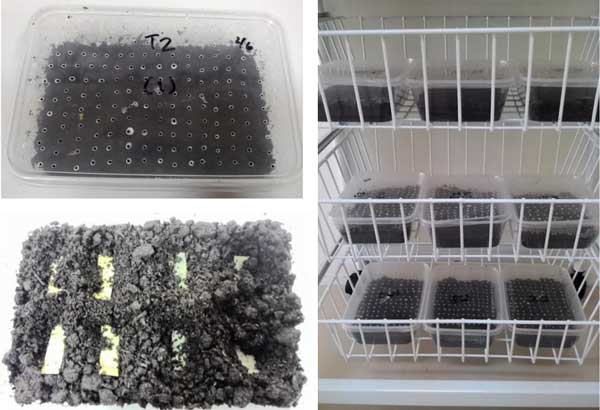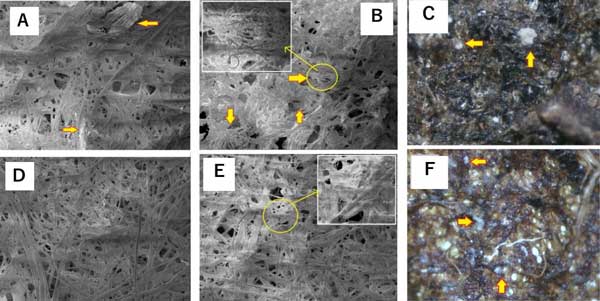Activated carbon Degradation of packaging paper in soil
Paper made of cellulose can be used as food packaging paper to maintain the freshness and nutritional value of food. The potential performance of the paper made of activated carbon and cellulose as food packaging needs to be supported by information about its natural degradation ability. It is important to understand the ability of activated carbon paper to naturally degrade in soil to determine its impact on the environment, thus supporting environmental sustainability. Therefore, the biodegradation rate of this paper was observed and analyzed to obtain more comprehensive information about the recommended use of nano activated carbon bamboo paper as packaging paper.
Manufacturing method of activated carbon food packaging paper
Paper containing nano activated carbon is prepared through a series of processes. Paper is made of plant fiber and is produced by semi chemical method using hot soda process. Nano activated carbon is produced by carbonizing sawdust waste at 400-500 ℃ for 4-5 hours, and then activating it with steam at 800 ℃ for 70 minutes. The obtained activated carbon is crushed with a grinder and filtered through a screen filter to obtain nanometer scale. Nano activated carbon was added to the pulp at the proportion of 20% as an additive to increase the density of the paper.
Biodegradability of activated carbon paper in soil
Fiber paper with and without activated carbon is cut into 3cm x 1cm strips. These papers are dried at 75 ℃ for 48 hours, and the weight after drying is calculated as the initial dry weight. Put the paper into a plastic container containing compost soil, which is made of compost domestic waste produced by agricultural industry, with a humidity of 45%, and cover it with a porous cover. The test group was composed of 12 repetitions, 12 weeks of observation, and 4 weeks of interval (3 samples). The sampling time is expressed as T1, T2 and T3. The initial condition is expressed as T0. When sampling, take out the paper and clean it with a soft brush. The biodegradation test in soil is described in Figure 1.

Figure 1: Comparison between activated carbon paper biodegradation test and soil.
Soil biodegradation test
Biodegradation test results in soil and previous research results show that the presence of activated carbon increases the abundance of microorganisms in soil. The presence of 0.4% activated carbon in soil promoted the growth and enzyme activity of lignin decomposing fungi in soil. The porous structure of nano activated carbon should be used as a site for living microorganisms, and then lead to enhanced biodegradation of paper in soil. Therefore, the existence of nano activated carbon in paper improves the biodegradation rate of paper. It is worth noting that the paper containing cellulose fiber is composed of amorphous and crystalline regions, and its degradation occurs at different rates.
At the end of the observation, compared with the paper without nano activated carbon, the paper with nano activated carbon degraded more thoroughly and its physical structure was more brittle. About 50% of activated carbon paper was completely degraded, and only one cellulose paper was completely degraded in the biodegradation test of soil test block. Observe the appearance of the paper after 12 weeks as shown in Figure 2. However, the degradability of paper is also affected by the type of paper. Previous studies on the biodegradability of various types of paper showed that different types of paper had different biodegradability under controlled conditions. The study found that newspapers and tissues/handkerchiefs are more difficult to biodegrade unless the manufacturing process is changed.

Figure 2: Observe the paper morphology after 12 weeks, the paper without nano activated carbon (top) and the paper with nano activated carbon (bottom).
Microscopic observation
The microscopic observation of the observation paper is shown in Figure 3. There are differences in the distribution of fungal mycelium between the surface appearance of paper containing nano activated carbon and cellulose only. Compared with the original paper, the distribution of fungal hyphae on the surface of nano activated carbon paper is more extensive. However, the biodegradation rate of paper by microorganisms depends on the species and conditions of fungi. The white or bleached appearance of the paper surface may indicate the presence of white rot fungi, which are characterized by their ability to degrade lignocellulose components by producing white materials rich in cellulose.

Figure 3: Micro appearance of paper surface (50x magnification), (A) with nano activated carbon/cellulose paper before biodegradation test; (BC) Nano activated carbon/cellulose paper after biodegradation test; (D) Cellulose paper only before biodegradation test; (EF) Cellulose paper is only tested for biodegradation. The yellow narrow corresponds to the fungal mycelium from the soil, and the inserted image is magnified 250 times.
The degradation of packaging paper made of activated carbon in soil has been found, and the effect of activated carbon on cellulose paper has been observed. The presence of activated carbon increased the paper degradation rate seen from the dry weight of the soil test block. The effect of activated carbon 2 weeks before observation showed that the microbial density on the paper surface was slightly higher. In general, the addition of activated carbon slightly improves the biodegradation rate of paper, which is more environmentally friendly.


